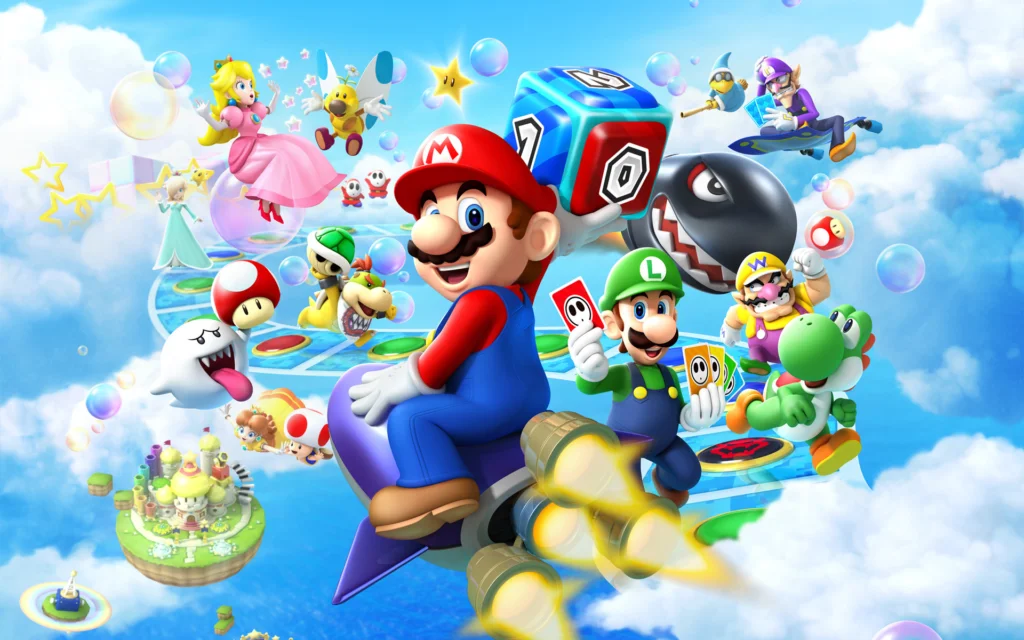Since his debut in 1981, Mario has become an iconic figure in the video game industry, representing innovation and enduring popularity. Created by Shigeru Miyamoto for Nintendo, Mario’s journey from a simple arcade character to a global cultural icon is a testament to the franchise’s adaptability and widespread appeal.
Origins and Early Success
Mario first appeared as “Jumpman” in the arcade game Donkey Kong (1981), where he was portrayed as a carpenter rescuing his girlfriend from a giant ape. This game introduced players to platform gaming and set the stage for Mario’s future adventures. In 1983, Mario transitioned to plumbing in Mario Bros., a cooperative arcade game that also featured his brother, Luigi.
The Birth of Super Mario
The release of Super Mario Bros. in 1985 for the Nintendo Entertainment System (NES) marked a significant milestone in gaming history. This side-scrolling platformer introduced players to the Mushroom Kingdom, where Mario embarks on a quest to rescue Princess Toadstool (later known as Princess Peach) from the villainous Bowser. The game’s innovative level design, precise controls, and engaging gameplay set new standards for the industry.
Expansion into Diverse Genres
The success of Super Mario Bros. led to numerous sequels and spin-offs, each exploring different genres:
- Super Mario Bros. Series: Sequels like Super Mario Bros. 2 (1988) and Super Mario Bros. 3 (1988) expanded on the original’s mechanics, introducing new power-ups and more complex level designs.
- Super Mario World: Released in 1990 for the Super Nintendo Entertainment System (SNES), this game introduced Yoshi, Mario’s dinosaur companion, adding new gameplay elements and expanding the Mario universe.
- 3D Adventures: Super Mario 64 (1996) for the Nintendo 64 revolutionized the series by introducing 3D gameplay, offering players expansive worlds to explore with unprecedented freedom.
- Mario Kart Series: Beginning with Super Mario Kart (1992), this racing series became a staple for multiplayer gaming, combining racing mechanics with iconic Mario characters and items.
- Role-Playing Games (RPGs): Titles like Super Mario RPG: Legend of the Seven Stars (1996) and the Paper Mario series blended traditional RPG elements with the whimsical Mario universe, offering rich narratives and strategic gameplay.
Cultural Impact and Legacy
Mario’s influence extends beyond video games. He has starred in animated series, a live-action film in 1993, and a successful animated film in 2023, which broke box office records. Additionally, Mario has been featured in various merchandise, theme park attractions like Super Nintendo World, and even educational games, showcasing his versatility as a character.
The franchise’s music, particularly the original Super Mario Bros. theme composed by Koji Kondo, is instantly recognizable and has been performed in concerts worldwide, further cementing Mario’s place in popular culture.
Recent Developments and Future Prospects
Nintendo continues to innovate within the Mario franchise. Recent titles like Super Mario Odyssey (2017) for the Nintendo Switch have received critical acclaim for their creativity and engaging gameplay. The franchise also embraces modern technology with games like Super Mario Maker (2015) and its sequel, allowing players to create and share their own levels, fostering a community of creativity.
In 2024, Nintendo announced Mario & Luigi: Brothership, a new entry in the RPG series, demonstrating the company’s commitment to expanding the Mario universe and exploring new gameplay experiences.
Conclusion
The Mario franchise’s enduring success can be attributed to its consistent innovation, adaptability to new gaming technologies, and the universal appeal of its characters and stories. As Nintendo continues to develop new titles and experiences, Mario remains a central figure in the gaming industry, captivating audiences across generations.




